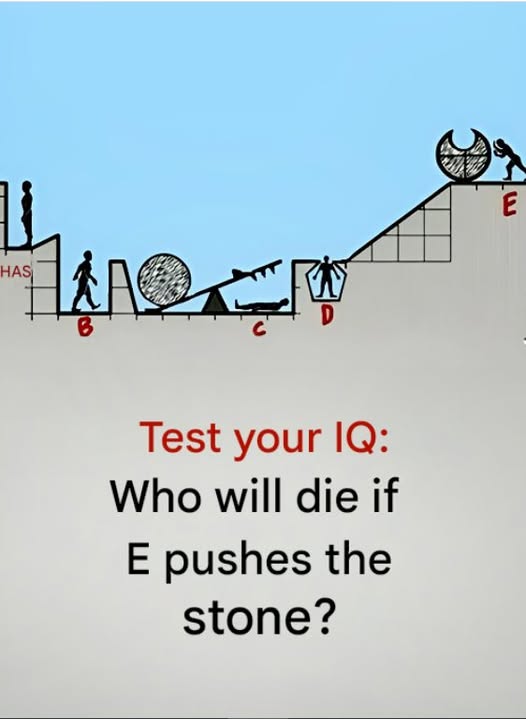ADVERTISEMENT
ing one card with a different color on it (red, green, or blue). Each person can see the other two cards but not their own. They are told that at least one of them is holding a red card.
For Complete Cooking STEPS Please Head On Over To Next Page Or Open button (>) and don’t forget to SHARE with your Facebook friends
They are then asked, “Can you tell me the color of your own card?”
After some moments of silence, each of the three answers, one after the other, “I don’t know.”
Finally, after another pause, one of the people says, “I know the color of my card.”
The Question:
Can you figure out the color of the card each person is holding based on the clues provided?
Solution Approach:
To solve this puzzle, it’s important to understand the reasoning behind the “I don’t know” statements. Here’s a breakdown of how to approach it:
- Clue #1: They all see each other’s cards.
- A sees B’s and C’s cards.
- B sees A’s and C’s cards.
- C sees A’s and B’s cards.
- Clue #2: At least one person is holding a red card.
- This means there could be a red card in play, but it’s not necessarily true for everyone.
- The Key Insight:
- The fact that each person initially says, “I don’t know,” is a crucial clue. If any of them saw two green or blue cards, they would immediately know they were holding a red card themselves (because they would be the only one without a green or blue card).
- However, since all three say they don’t know, it suggests that at least one of them must be holding a red card. This uncertainty is important in solving the puzzle.
- The Final Realization:
- After some time, one of them says, “I know the color of my card.” This means the other two must have shown a specific combination of cards (red and green or red and blue), allowing the third person to deduce their own card’s color.
Answer:
The solution to this puzzle is that each person is holding a red card. This is because, after the initial “I don’t know” responses, the final person realizes they are holding a red card after deducing that the others must have the same card, based on the lack of other color combinations.
For Complete Cooking STEPS Please Head On Over To Next Page Or Open button (>) and don’t forget to SHARE with your Facebook friends
Why Does This Puzzle Work?
This puzzle works because it forces you to think critically and consider how knowledge is shared and how deductions are made. In many IQ tests, success often comes from looking at the bigger picture, analyzing the provided information, and understanding the way that logic unfolds over time.
How Did You Do?
This puzzle is a great example of how a small amount of information can lead to a complex set of logical conclusions. If you solved it, congratulations! If not, don’t worry – practice makes perfect. These types of exercises can really help improve your problem-solving skills and cognitive abilities.
IQ puzzles like this one are great tools for enhancing your logical reasoning, memory, and attention to detail. So, next time you’re looking for a mental challenge, remember to test your IQ with puzzles that stretch your mind and keep you sharp!
Conclusion: IQ tests aren’t just about finding the “right” answer quickly. They’re about using reasoning, analysis, and logical deduction to solve problems step by step. Whether you’re solving puzzles for fun or as a brain exercise, these challenges are a fantastic way to keep your mind engaged and improve your intellectual abilities. Try sharing this puzzle with friends or family and see how they do—sometimes the best challenges are the ones you can share!
